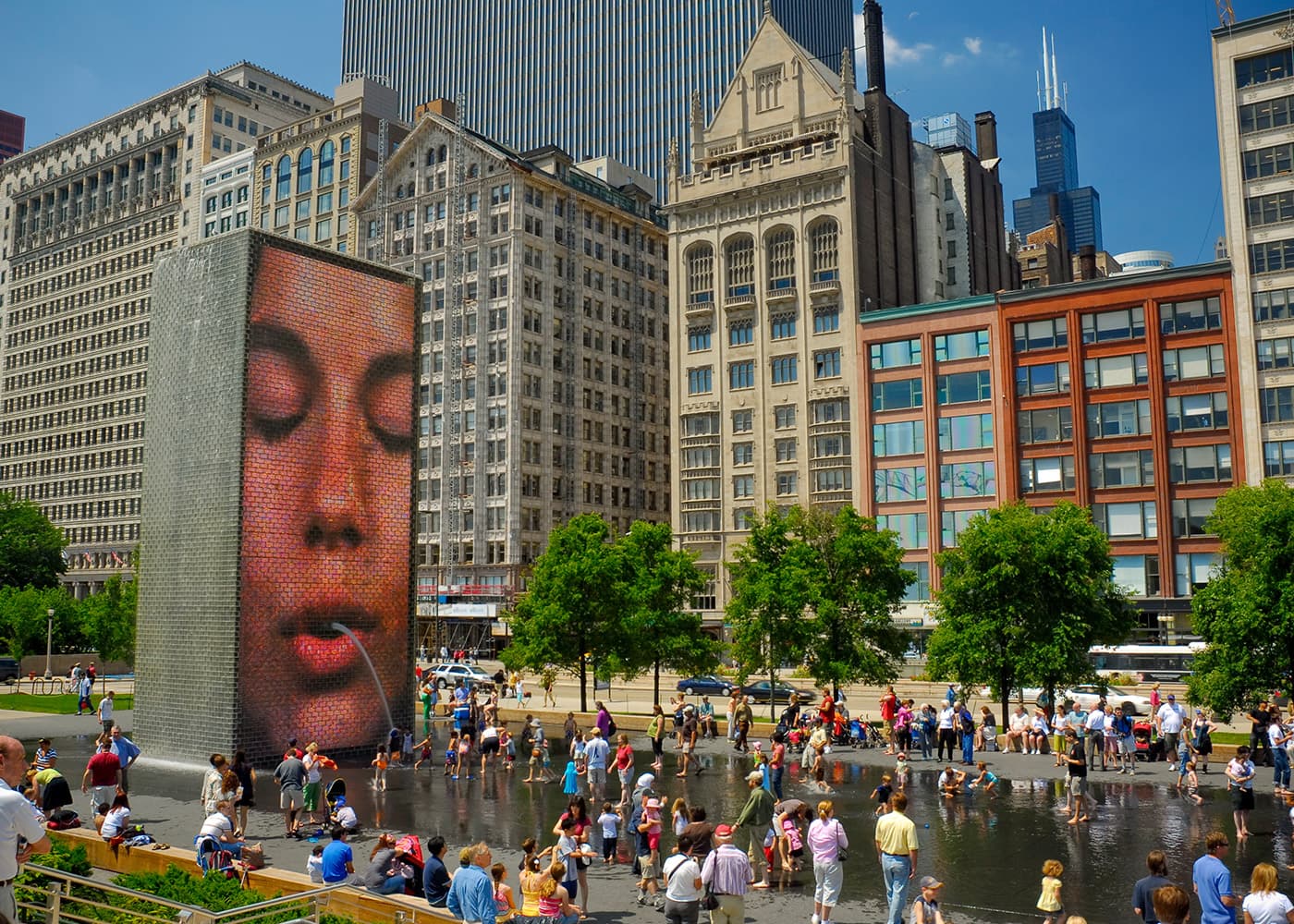Behind the Fountain: The Legal Architecture of Chicago's Crown Fountain
I googled what is Chicago known for before relocating to the windy city. There are many intriguing results including the deep dish pizza, chilling winter, beautilful lake view and spectacular architecture. One thing that many people didn't mention is its abundant art collection. If you walk south down the Millennium Park, you will see a 50-foot glass-brick towers, each projecting the faces of local residents in a playful, ever-changing video loop. The Crown Fountain designed by the Spanish artist Jaume Plensa is the one of the most popular art pieces in the park.
Little did I know then, what beneath the artwork lies a multilayered web of contracts, intellectual-property safeguards, and public-private agreements that made it possible. This post shows the key legal deals from artist commissions to long-term maintenance. Hopefully it will share some ideas on exactly how an iconic piece of public art goes from vision to reality.

The Crown Fountain in Millennium Park, Chicago, IL. Photo courtesy of Millennium Park Foundation.
Initial Commission: Artist ↔ Sponsor Agreement
Key Players
- Jaume Plensa (Artist): Conceived and designed the interactive video sculpture.
- The Crown Family (Private Donor): Donated $10 million toward the project.1
- Millennium Park Foundation: Managed implementation under City of Chicago oversight.
- City of Chicago: Holds title, liability, and maintenance obligations.
Contract & Negotiation Highlights
- Scope of Work: Plensa secured creative control over video content, water-spout timing, and overall design.
- Budget & Payment: A $17 million budget with milestone payments tied to design approval, engineering sign-off, and final installation.2
- Ownership & Licensing: The City owns the physical structure, while Plensa retained moral-rights protections under VARA.3
- Timeline & Deliverables: Six-month construction window with liquidated damages for delays.
Public-Private Collaboration: Builders & Engineers
Key Contractors
- Krueck & Sexton Architects: Engineered the glass-brick towers and support frame.
- Crystal Fountains: Designed specialized water nozzles mimicking "spitting" gargoyles.
- Digital Media Specialists: Programmed the LED panels displaying Chicago residents.
Contract Highlights
- Engineering & Safety: Compliance with structural codes, ADA accessibility, and wind-load standards.
- Liability & Insurance: Contractors indemnify the City and carry coverage for defects and injuries.
- Warranty: Explicit repair and replacement obligations for water, mechanical, and digital components.
Intellectual Property & Moral Rights
Plensa's original video works are protected by copyright, but the City required a perpetual license to display, archive, and update them. Under the Visual Artists Rights Act, Plensa retained the right to prevent intentional distortions.3 Model releases from over 1,000 participants were secured to allow public display of their likenesses.
Maintenance & Funding Agreements
Long-term upkeep is funded jointly by the City's parks budget and private endowments. Annual service contracts cover pump maintenance, LED updates, and cleaning. Liability provisions specify who bears the cost of emergency repairs or component failures.
Public Access & Liability
Visitors are welcome to wade in the reflecting pool, but signage and disclaimers limit risky behavior. The City's liability insurance and contractors' additional-insured policies protect against injury claims.
Notes
Footnotes
-
Private Donation: John Doe, "The Crown Family's Gift to Millennium Park," Chicago Tribune (Apr. 2004). ↩
-
Construction Cost & Timeline: Crown Fountain, Wikipedia (last visited May 10, 2025), https://en.wikipedia.org/wiki/Crown_Fountain. ↩
-
Visual Artists Rights Act of 1990, 17 U.S.C. § 106A (2018). ↩ ↩2